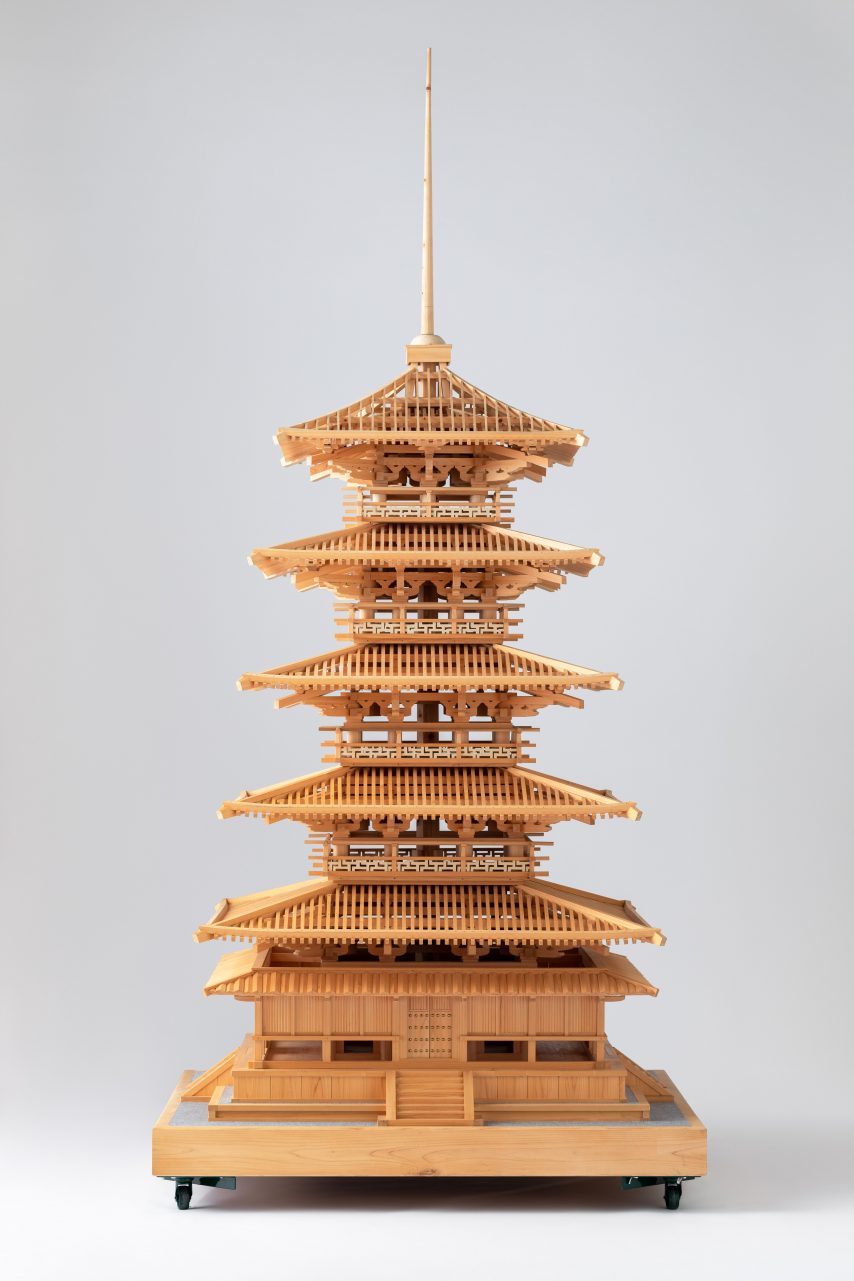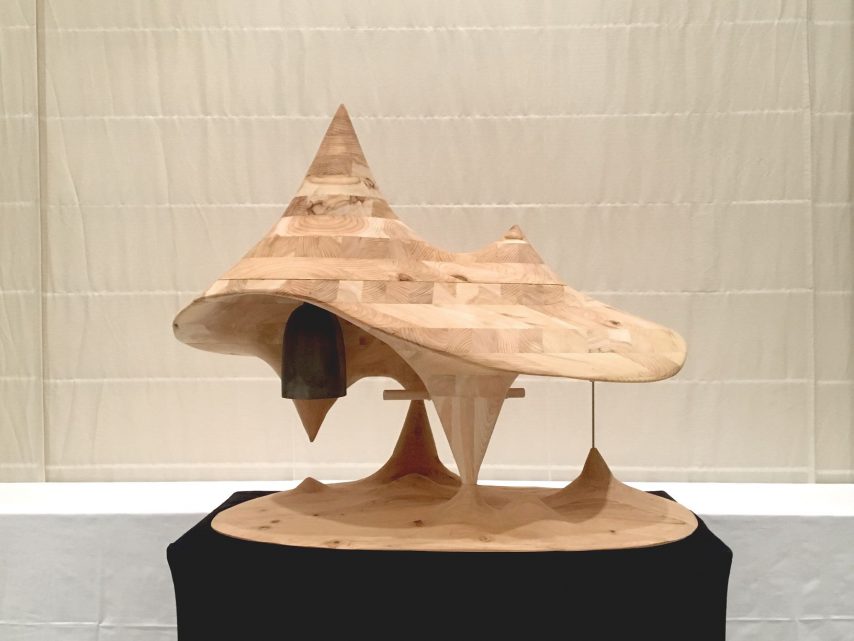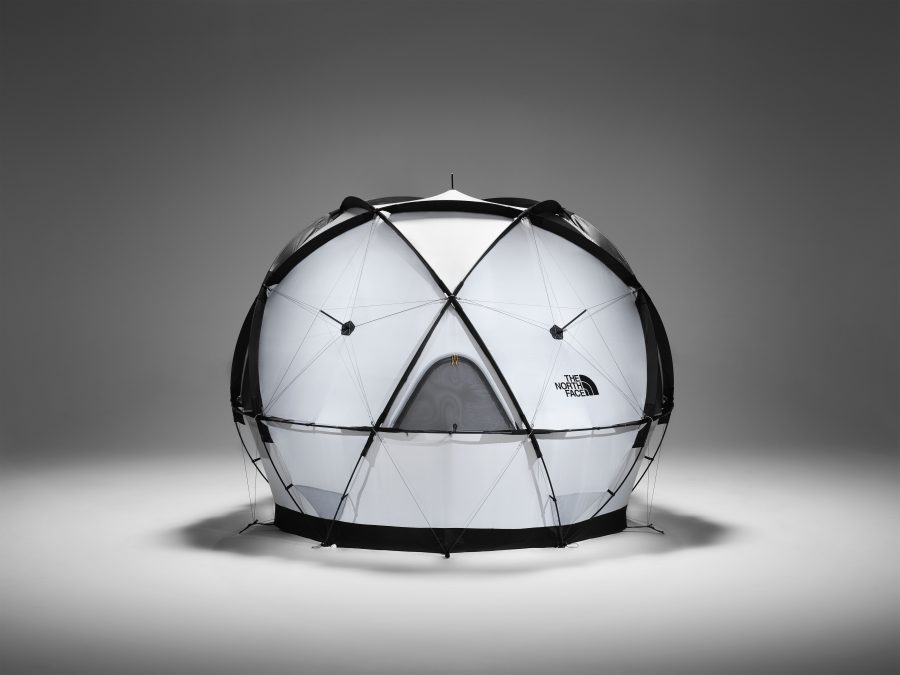2024.3.13
WHAT MUSEUM to Hold “SENSE OF STRUCTURE: From Horyuji Temple To The Universe” from April 26th (Fri), 2024
A major exhibition centered around Structural Design that brings together 100 valuable structural models, ranging from wooden architecture to habitats on the Moon
WHAT MUSEUM, operated by Warehouse TERRADA, will hold an exhibition titled "SENSE OF STRUCTURE: From Horyuji Temple To The Universe" from April 26th (Fri) to August 25th (Sun), 2024. This exhibition casts a spotlight on Structural Design, the innovative framework of architecture, tracing from the world’s oldest surviving wooden building, the Five-storied Pagoda at Horyuji Temple, to lunar base camps currently under development. Significantly expanding from the previous exhibition with changes in the exhibits, this will be the largest architectural exhibition of its kind at our museum yet, showcasing over 100 structural models from well-known architectural masterpieces. With the Golden Week and the summer vacation approaching, we aim to present the world of structural design through models to everyone, from architecture professionals to families, in an accessible manner.

The focus of the exhibition is “Structural Design,” the inventive field that constitutes building frameworks. Although Japan is home to many globally celebrated architects, the role of structural engineers—who play a crucial part in realizing architects’ visions by engaging diligently with materials and the flow of forces, such as gravity and wind force, and by working in a way that resonates with their time and society—is less recognized. The world of specialized structural design can appear intimidating, but this exhibition seeks to make it accessible by allowing visitors to view and interact with models of architectural “frameworks,” thus providing a straightforward introduction to their principles.
The second half of the exhibition will focus on architectural works using wood, which is a sustainable building material attracting attention recently. It will highlight wooden construction, from Japan’s traditional techniques to the most advanced innovations, offering a comprehensive view of wooden structure’s historical significance and pondering the future of wooden architecture. Additionally, the exhibition will reveal the expansive reach of structural design through cross-disciplinary projects in fashion, space exploration, and beyond. With a significant refresh of exhibits from the first half of the exhibition, visitors can enjoy viewing over 100 structural models. The duration of the exhibition will also feature related book releases, talk sessions, performances, and workshops, with details to be announced progressively.
[Highlights]
– This architectural exhibition, the largest of its kind at our museum, brings together over 100 valuable structural models of well-known architectural masterpieces from all over Japan
– Offering a sweeping overview of more than 1,400 years of wooden architecture history through models, delving into the potential of sustainable wooden building practices
– Exhibits include a 1/10 scale massive model of the Five-storied Pagoda at Horyuji Temple (approximately 3.6 m tall), the wooden model of the Matsumoto Castle Tower, and other interactive models that allow visitors to physically and intuitively grasp the scale and mechanics of structures
– The premiere showing of the latest full-scale model of a “Lunar Base Camp” designed for human habitation on the Moon, developed in collaboration between JAXA (Japanese Aerospace Exploration Agency) and structural engineer Jun Sato and his team
– A comprehensive presentation of more than 50 structural engineers, encompassing emerging talents and established names from Japan
– Innovative collaborations between fashion and structural design, including HOMME PLISSÉ ISSEY MIYAKE
[Four sections of the exhibition]
The second half of the exhibition will feature displays on four themes across the entire first and second floors of WHAT MUSEUM.
1. Future of Traditional Architecture and Wooden Structures
2. New Generation of Structural Engineers
3. Expanding the Scope of Structural Design
4. To Outer Space
1. Future of Traditional Architecture and Wooden Structures
Spanning from traditional Japanese wooden architecture to cutting-edge modern wooden constructions, we offer an expansive view of the unique qualities and potential of wood as a building material. The exhibition begins with historic wooden structures like the Five- storied Pagoda at Horyuji Temple and Matsumoto Castle, extending to modern wooden frameworks and contemporary wooden buildings developed through collaborations between architects and structural engineers, including Shoei Yoh with Gengo Matsui, Hiroshi Naito with Kunio Watanabe, Kengo Kuma with Katsuo Nakata, Hiroshi Sambuichi with Masahiro Inayama, and Sou Fujimoto with Mikio Koshihara. Through an architectural perspective that considers dimensions, joints, and structural systems, we provide a historical overview of timber constructions sourced from the forest and probe into their future potential.

Model of Five-storied Pagoda at Horyu-ji Temple 1/10 scale
Owned by Tetsuhiro Honda
Model making: Chojiro Tamura
Photo: Shunta Inaguchi

Mineyama Navy Air Corps Hangar
Photo: ToLoLo studio

Model of Toba Sea-Folk Museum
Architect: Naito Architect & Associates
Structural engineer: Structural Design Group

Ever Field Wood Working Plant
Architect: Jiro Ogawa, Yasushi Kobayashi, Shota Ikeda
Structural engineer: Yamada Noriaki Structural Design Office
Photo: Fujitsuka Mitsumasa

Mito City Civic Center
Architect: Toyo Ito & Associates, Architects
Mitsuo Yokosuka Architecture Office
Structural engineer: Arup
Photo: Kai Nakamura
2. New Generation of Structural Engineers
The role of structural engineers, who collaborate with architects to forge structural designs, is fundamental to the uniqueness of world-leading contemporary Japanese architecture. Through interview videos with more than 30 structural engineers, we explore their ideologies and philosophies and highlight the works of emerging young structural engineers to indicate the future directions of structural design.

Freeform Membrane Tensegrity
Design / construction: Yuta Shimoda, Sei Hayashi, Tomoyuki Gondo, Hiroki Awaji, Haruto Kamijo, Taichi Nakamura
Cooperation: Taiyo Kogyo Corporation
Photo: tetu kimura

Shoumyouji Temple Bell Hut
Architect: onishimaki+hyakudayuki architects / o+h
Structural engineer: HSC
3. Expanding the Scope of Structural Design
We will display cross-disciplinary initiatives that utilize geometric insights obtained from structural design, spanning areas like fashion and cartography. Visitors will have the opportunity to immerse themselves in structural design throughout the entire space.

Geodome4
Keio University, Narukawa Hajime Laboratory
©️ GOLDWIN INC.
4. To Outer Space
This section introduces efforts to expand the structural design of architecture on the Earth to outer space. It will exhibit a life-size model of a lunar base camp intended for a long-term human presence on the Moon, currently under joint development by Jun Sato and his team and the Japan Aerospace Exploration Agency (JAXA).

Full scale polyhedron for snap-through test / Habitation module
Jun Sato Laboratory, Graduate School of Frontier Sciences, The University of Tokyo + Jun Sato Structural Engineers Co., Ltd.
Photo: Shunta Inaguchi
[Comment from the Curator]
We humans have lived in a world subject to seismic force, wind force, and other natural forces. How have we designed the flow of forces in architecture on this planet? In the world of structural design, structural engineers have been working diligently with such flow of forces and materials in a gravitational space called the Earth and have merged technologies and art in the changing times and society. This exhibition showcases Japan’s structural engineers and structural design, which are pivotal in the creation of architecture, from traditional Japanese wooden structures and contemporary wooden architecture to space structures, articulated through four themes to highlight the expansive reach of structural design. Visitors can engage with structural models and feel the architecture firsthand, gaining insight into the forces that sculpt our environment and connecting these experiences with their own sensibilities. They can also experience the creative possibilities of structural design and its philosophy behind structural design as a form of creative expression.
We eagerly invite a diverse audience to experience the world of structural design through their senses.
Curator Profile
Ikue Kondo
Since 2018, Ikue Kondo has served as the Deputy Director of the ARCHI-DEPOT Museum and, from 2020, as the Director of WHAT MUSEUM’s ARCHI-DEPOT. She has curated exhibitions including “GAUDI QUEST” (2019), “Structural Engineers – the sense of structural design” (2019), “The Words for Architecture” (2020), and “Architectural Model: Historical Transition as a Medium of Architecture” (2022). She is the principal of Ikue Kondo Architects. Parallel to her architectural design work, she is involved in educational initiatives that expand the possibilities of the architectural field.
[Audio Guides]
By downloading the official WHAT MUSEUM app, visitors can use the audio guide. (Free)
[Exhibition Collaborators]
RFA | Toyo Ito & Associates, Architects | AuthaGraph Co., Ltd. | Ohno JAPAN | OBAYASHI CORPORATION | onishimaki+hyakudayuki architects / o+h | Jiro Ogawa, Yasushi Kobayashi, Shota Ikeda | HOMME PLISSÉ ISSEY MIYAKE | GOLDWIN INC. | Takemoku Co., Ltd. | NIKKEN SEKKEI LTD | Mika Araki Laboratory, Kwansei Gakuin University | Takayuki Kiuchi | Kigumi Museum | Hiroatsu Fukuda Laboratory, The University of Kitakyushu | Akihiko Kihara | Masaaki Iwamoto Laboratory, Kyushu University | Kazuya Saito Laboratory, Kyushu University, Faculty of Design | Shoei Yoh Archive at Kyushu University | kufu | KAP | Keio University, Narukawa Hajime Laboratory | Graph Studio | Katsutoshi Sasaki + Associates | Jun Sato Structural Engineers Co., Ltd. | SALHAUS | Schenk Hattori | Hirokazu Toki Laboratory, The University of Shiga Prefecture | Ogashiwa Norika laboratory, Shibaura Institute of Technology School of Architecture | Yuta Shimoda | Shoumyouji Temple | Shirakawa Village Educational Committee | Chojiro Tamura | DN-Archi + Shinnosuke Fujita Laboratory, Kindai University (formerly The University of Kitakyushu) | Tatsumi Terado Structural Studio | Tokyo Skytree(R) | Mikio Koshihara laboratory, Institute of Industrial Science, The University of Tokyo | Jun Sato Laboratory, Graduate School of Frontier Sciences, The University of Tokyo | Masahiro Inayama, Graduate School of Agricultural and Life Sciences, The University of Tokyo | TOHATA ARCHITECTS & ENGINEERS | Naito Architect & Associates | Nakata Structural Design Office | Niigata Polytechnic College | The University of New South Wales | MASAHIRO HARADA + MAO / MOUNT FUJI ARCHITECTS STUDIO | HSC | Tetsuhiro Honda | Matsumoto City Museum | Eisuke Mitsuda + Mitsuda Structural Consultants | Chie Matsuo Laboratory, School of Architecture, Meisei University | Jun Yanagimuro Structural Design | Yamada Noriaki Structural Design Office | Yawatahama City Board of Education and others
[Overview of the Exhibition]
Title: SENSE OF STRUCTURE: From Horyuji Temple To The Universe
Dates: April 26th (Fri) – August 25th (Sun), 2024
Venue: 1st and 2nd floors at WHAT MUSEUM (Warehouse TERRADA G Building 2-6-10 Higashi-Shinagawa, Shinagawa-ku, Tokyo 140-0002)
Open Hours: Tuesday – Sunday, 11:00 AM – 6:00 PM (Admission until 5:00 PM)
Closed on: Mondays (but open when Monday is a public holiday, then closed the following Tuesday)
Admission: Adults 1,500 yen / University or vocational college students 800 yen / Students under high school age Free
*Advance reservation by online ticketing is available.
*Re-entry ticket valid during the exhibition will be on sale
Exhibition Passport 2,500 yen
* WHAT MUSEUM’s ARCHI-DEPOT stores more than 600 architectural models, which architects and architectural firms entrust to us, and exhibits a part of them for visitors.
Price: Admission for ARCHI-DEPOT 700 yen / Admission including both the exhibition and ARCHI-DEPOT 2,000 yen
Organizing: WHAT MUSEUM
Planning: WHAT MUSEUM ARCHI-DEPOT
Cooperation: Mikio Koshihara, The University of Tokyo
Venue design: Hiroshi Yoshino Architects
Graphics: Kensuke Sakakibara (Iroha Design)
URL: https://what.warehouseofart.org/en/exhibitions/sense-of-structure_second-term_en
[About WHAT MUSEUM]
WHAT MUSEUM opened in Tennoz, Tokyo in December 2020. The Museum’s core work is to make the precious works of art properties that collectors and artists have entrusted to us accessible to the public. We have used our unique insight as a warehousing company to explore the concept of what an art facility should be. The result is to open up the warehouse to offer the public a look at art that they would not ordinarily have the opportunity to see. The museum exhibits works by artists active in the contemporary art scene side-by-side with the thoughts of the collectors as well as the artists, offering an innovative space for the appreciation of art. The name of WHAT (WAREHOUSE OF ART TERRADA) implies the cultural value which is gleaming quietly in the warehouse, and the museum exhibits two- and three-dimensional works as well as architectural models, photographs, movies, literature and installations. We plan and exhibit these diversified arts and cultures in our individual style of a museum as a warehouse company in new and unique approaches.

